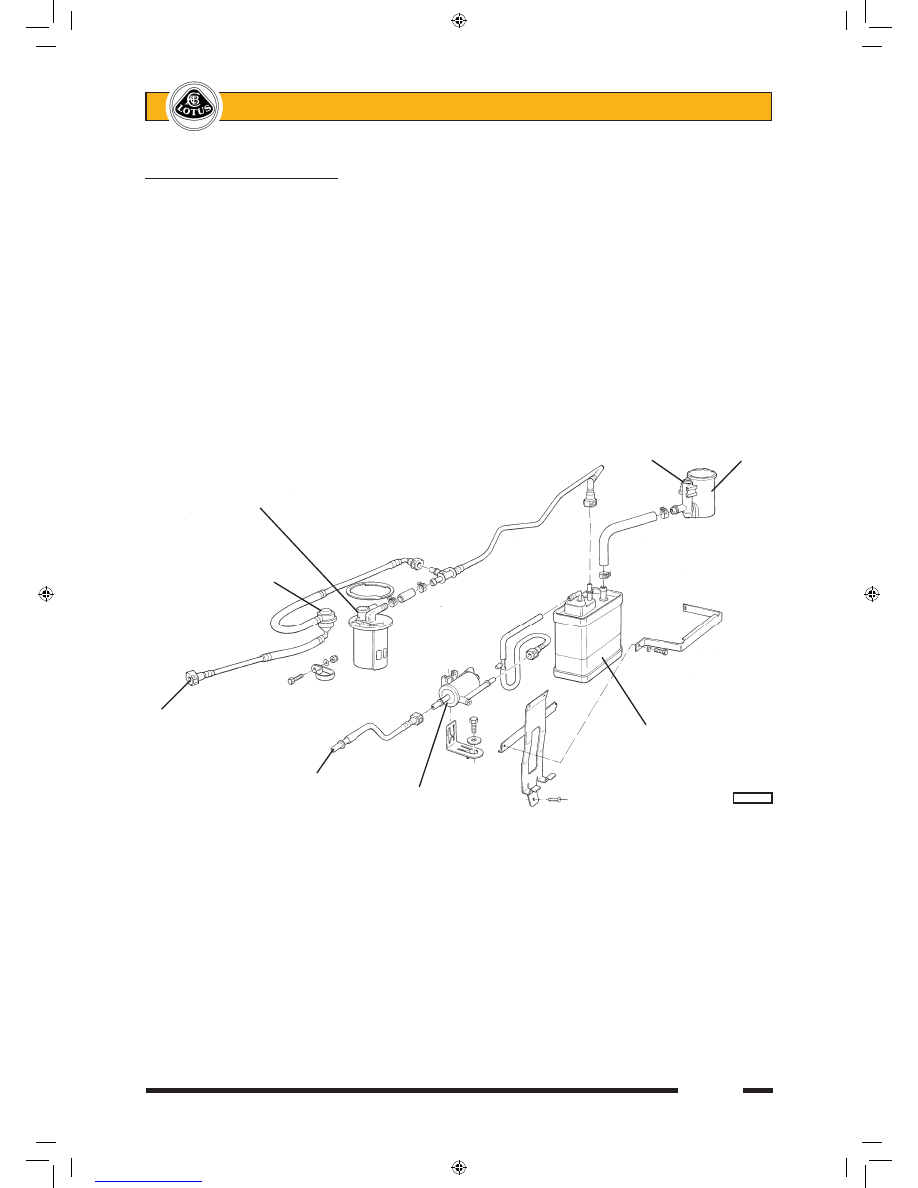Lotus Elise / Lotus Exige. Instruction - part 67

Page 3
Lotus Service Notes
Section LK
LK.1 - GENERAL DESCRIPTION
The 10.6 U.S. gall. (40 litre) fuel tank is fabricated from stainless steel, and is mounted within the chassis
crossmember between the passenger compartment and engine bay, and is secured against foam mouldings
by two support brackets from beneath. The fuel filler neck connects with the right hand top of the tank, which
incorporates an Onboard Refuelling Vapour Recovery (ORVR) system operating on cars prior to '06 M.Y. as
follows:
In order to ensure that fuel vapour displaced from the tank during the course of filling is cleansed by the
charcoal canister before venting to atmosphere, a liquid seal is used to close off the filler neck from escaping
vapour. The filler tube extends within the tank to within 10mm of the bottom surface, such that the end of the
tube is submerged in liquid fuel under all normal circumstances. A one way valve incorporated at the base
of this fuller tube allows fuel to flow into the tank, but prevents backflow into the filler tube. When the tank is
being filled, displaced vapour from within the tank is vented through a Fill Level Vent Valve (FLVV) mounted
in the top of the tank, to the charcoal canister. Additional venting also takes place via a port in the top plate
of the fuel pump, from where it is routed through a roll-over valve (to prevent fuel spillage in case of vehicle
inversion) mounted on the centre top of the tank, before joining the pipe between FLVV and canister. A 3mm
orifice in the filler pipe just below the top surface of the tank, allows the ECU to run fuel system integrity tests
as required by OBD3.
In order to meet LEV2 emissions criteria, the fuel system was revised for '06 M.Y. Whilst the principle of
operation remains unchanged, in order to reduce the potential for evaporative emissions, the roll over valve,
and its connection with the fill level vent valve, have been moved inside the body of the fuel tank, evidence of
this configuration being provided by a bulge in the tank top surface. The breather port on the fuel pump top
plate is connected back into the tank via a spigot on fuel tank top.
When the fuel reaches a specified level in the tank, a bouyant ball in the FLVV seals off the breather ap-
erture and causes a pressure rise in the filler neck to shut off the delivery discharge nozzle. Full tank capacity
has now been achieved. It is
NOT recommended to attempt to fill the tank beyond this level.
The fuel pump/fuel gauge sender unit is mounted into the left hand top surface of the tank, and includes
a submerged turbine type pump which draws fuel through a strainer 'sock' for delivery through a non-return
valve, integrated fuel filter and a pressure regulator valve to the outlet port. A fuel supply pipe is clipped to the
pump outlet port and is routed through the rear wall of the fuel tank bay, to feed the fuel rail for the four fuel
injectors at a pressure of around 325 kPa. The single line fuel system eliminates fuel circulation back to the
tank, resulting in reduced fuel tank temperature and evaporative emissions.
Canister vent close valve Air filter
Float level vent valve
Roll over valve
To fuel tank
breather port Charcoal canister
To engine
intake plenum Vapour management
pl4405mtc
valve
sn_lk_croft.indd 3
03/03/2006 11:22:28